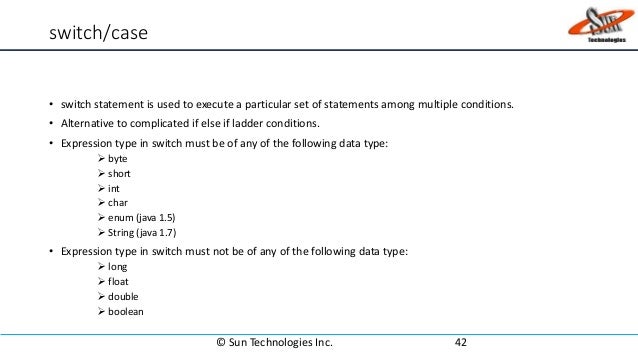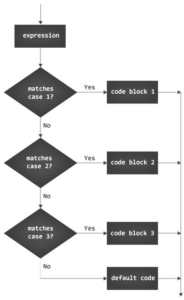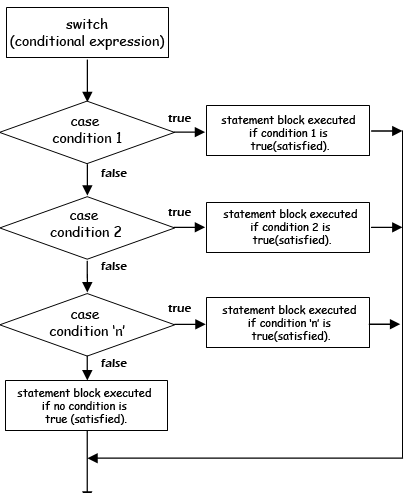
Technically, the switch statement is equivalent to the following if.else.
JAVA SWITCH CASE EXAMPLE CODE
In practice, you often use a switch statement to replace a complex if.else.if statement to make the code more readable. The following flowchart illustrates the switch statement: Keys points to know for java switch case String are: Java switch case String make code more readable by removing the multiple if-else-if chained conditions. The switch statement is like the if…else…if statement. That the switch statement will stop comparing the expression‘s result with the remaining case values as long as it finds a match. If the result of the expression does not strictly equal to any value, the switch statement will execute the statement in the default branch. If you skip the break statement, the code execution falls through the original case branch into the next one. Here you will learn to create a menu driven program using Java programming language. Switches operate somewhat differently in Java 13 and later releases.
JAVA SWITCH CASE EXAMPLE PDF
Download a PDF of this article Note: This article applies only to Java 12. The break statement exits the switch statement. Menu Driven Program In Java Using Switch Case while do-while by Mehtab Hameed Hey everyone, welcome to my new Menu Driven Program In Java Tutorial. Richard Warburton A new preview feature makes switch statements friendlier and less error-prone.

JAVA SWITCH CASE EXAMPLE HOW TO
This tutorial discussed how to use a switch statement in Java, and explored how to use the case, break, and default statements.

Switch statements are a form of conditional statement used to control the flow of a program.

The variable is compared with the value of each case statement. The Java switch statement is used to evaluate a statement against multiple cases and execute code if a particular case is met. The switch Statement of the Java Language Specification.Summary: in this tutorial, you will learn how to use the JavaScript switch statement to execute a block based on multiple conditions. Size: Large In the above example, we have used the switch statement to find the size. The default case can be used for performing a task when none of the cases is true. A switch statement can have an optional default case, which must appear at the end of the switch. It's possible to group several conditions in the same case statement using the mechanism of fall through allowed by switch statements, it's mentioned in the Java tutorial and fully specified in section §14.11. If no break appears, the flow of control will fall through to subsequent cases until a break is reached.


 0 kommentar(er)
0 kommentar(er)
